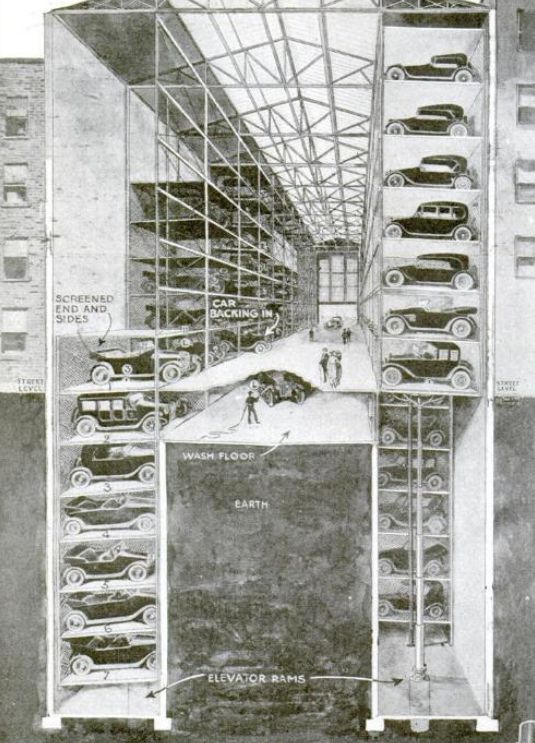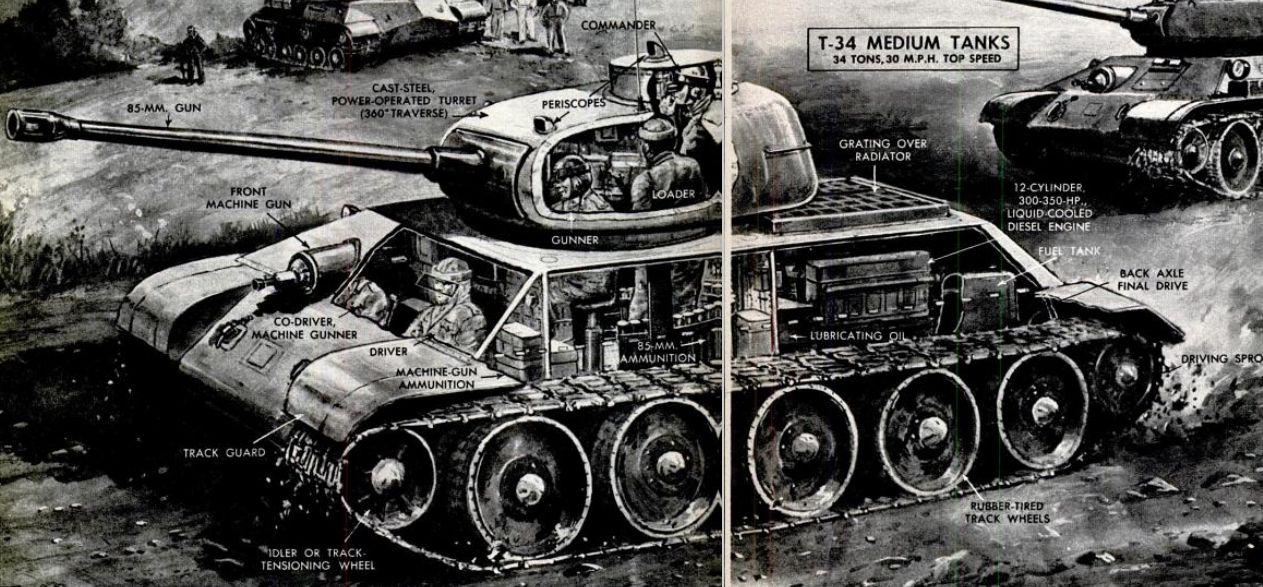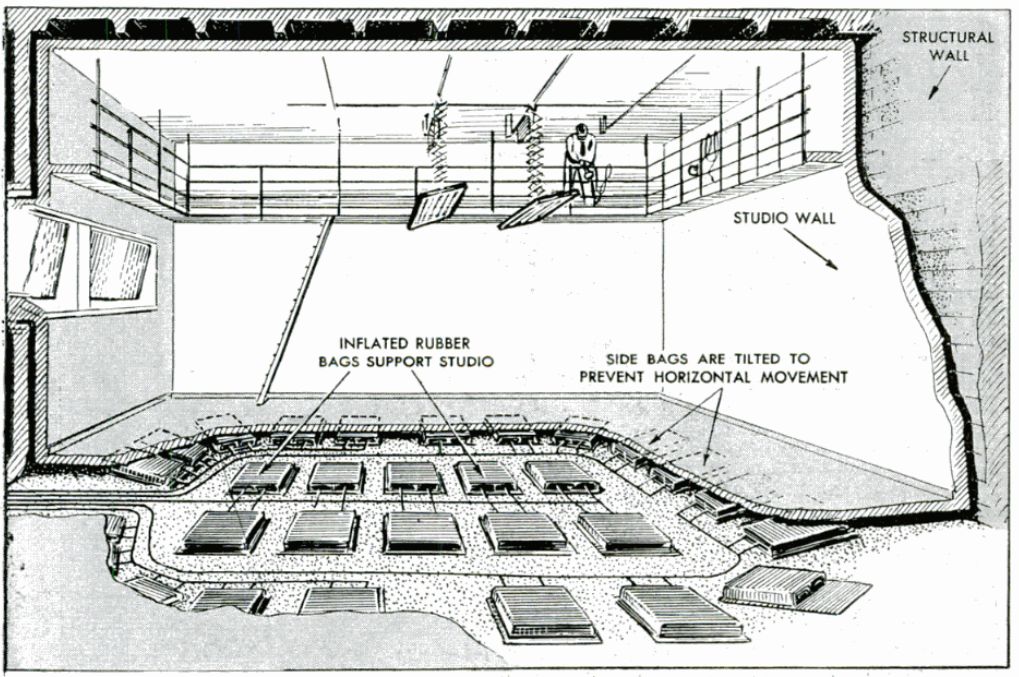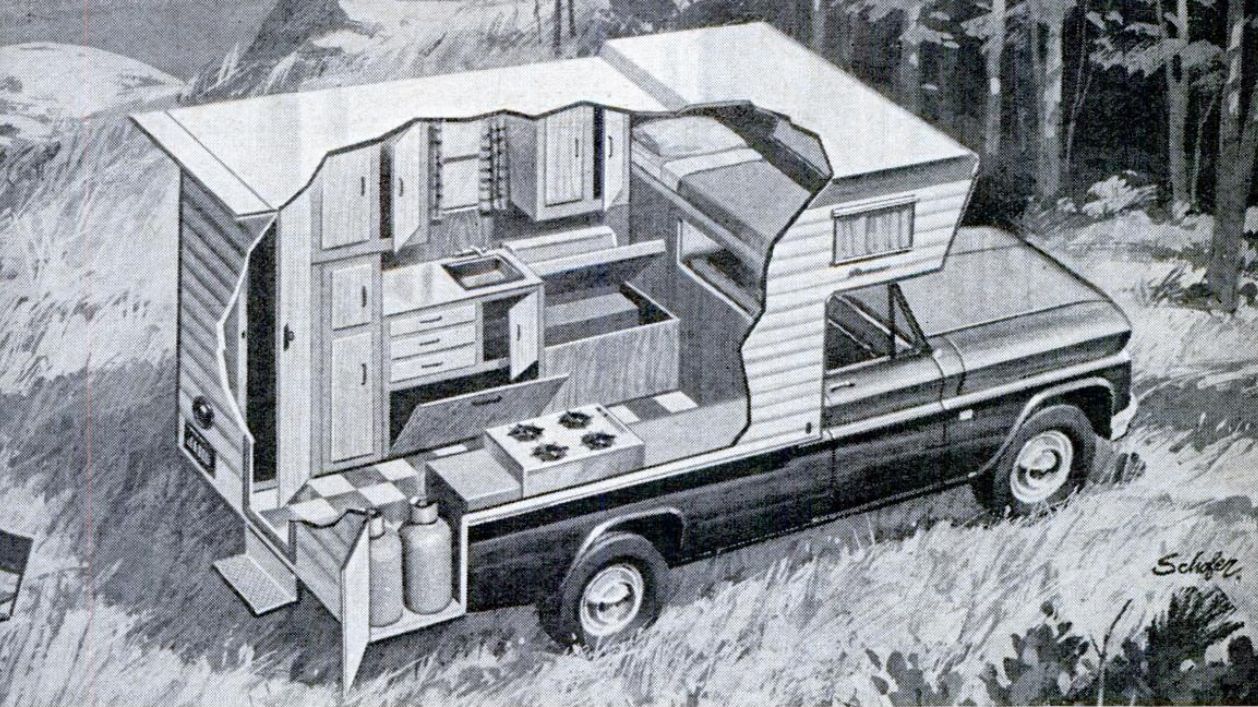Elevator-style car parks were still quite a novelty when this cutaway was published in 1920. The garage shown could hold 6x the number of cars that a comparable, ordinary garage could hold. This garage was basically all elevators: 42 elevators that retained the cars during the stay rather than off-loading them. Each elevat0r could hold… Continue reading Elevator-Style Garage Car Park Cutaway, 1920
Category: Cutaway Drawings and Cross-Sections
Cutaway and cross-section drawings of vehicles, weapons, submarines, airplanes, buildings, and more.
Old vs. New Locomotive Cutaway, 1920
It was a fairly accurate prediction, in 1920, of the difference between the bulky locomotive of the day vs. the predicted streamlined version. The article claimed that more locomotives had been built in the last 15 years than in all of history–perhaps true. It was also claimed that, by streamlining the locomotive and cutting down… Continue reading Old vs. New Locomotive Cutaway, 1920
Soviet T-34 Tank Cutaway, 1950
A circa 1950 G.H. Davis cutway drawing of two Soviet T-34 tanks (in the rear is the bottom of the upcoming Joseph Stalin III tank). The T-34 weighed about 34 tons, with a 500 hp diesel engine. Max speed: 30 mph. Source: Popular Mechanics November 1950
Cutaway of TV Studio Floating on Air, 1950
This TV studio in Chicago had one problem: it was located in the same building as printing presses for the Chicago Tribune. Vibration from the rumbling presses would compromise TV production. Solution: float the studio on air. Rubber bags, each 14 x 30 inches, were inflated and placed under the flooring. The bags elevated the… Continue reading Cutaway of TV Studio Floating on Air, 1950
Pickup Truck Camper Cutaway, 1967
This pickup truck camper was pretty state-of-the-art stuff for RVs in the late 1960s. It had a pass-through to the cab; 12v outlets; aircraft inclinometers to indicate when the camper was leveled off; stiff springs; and an over-the-cab bunk. Source: Popular Mechanics May 1967




